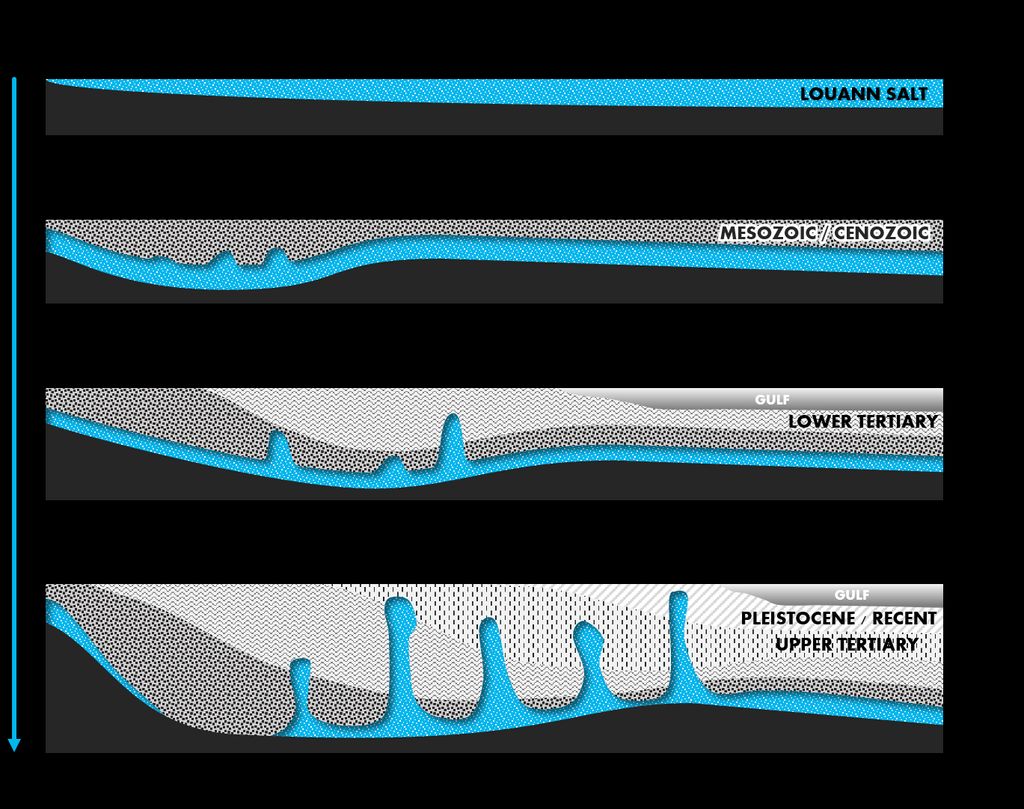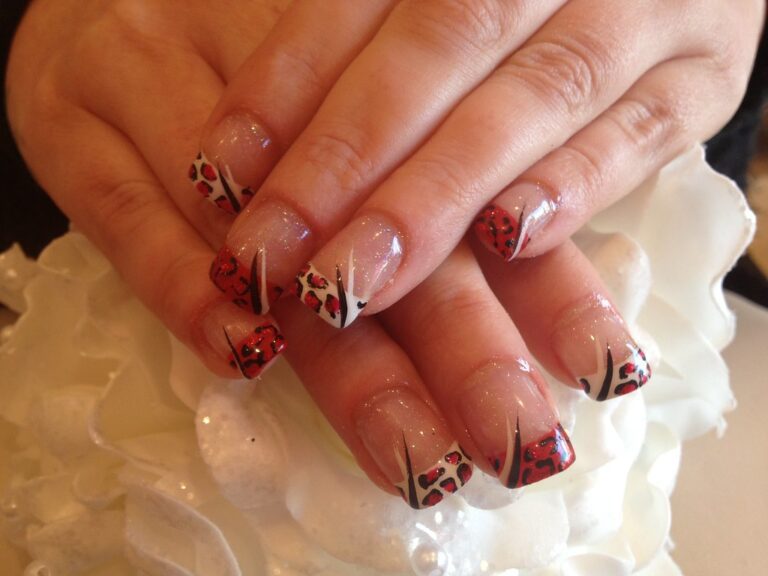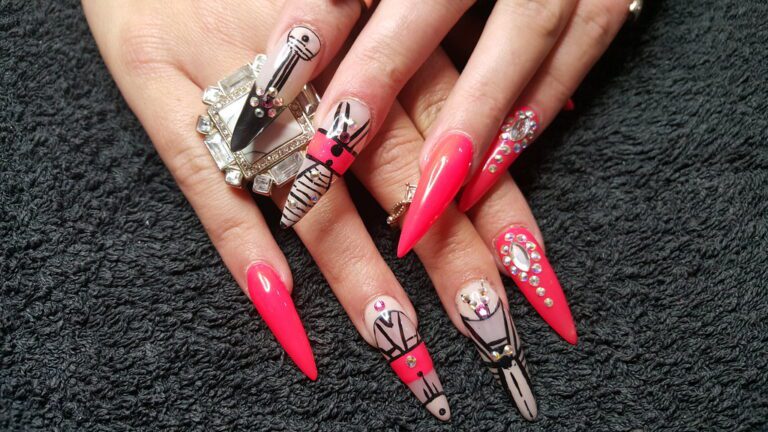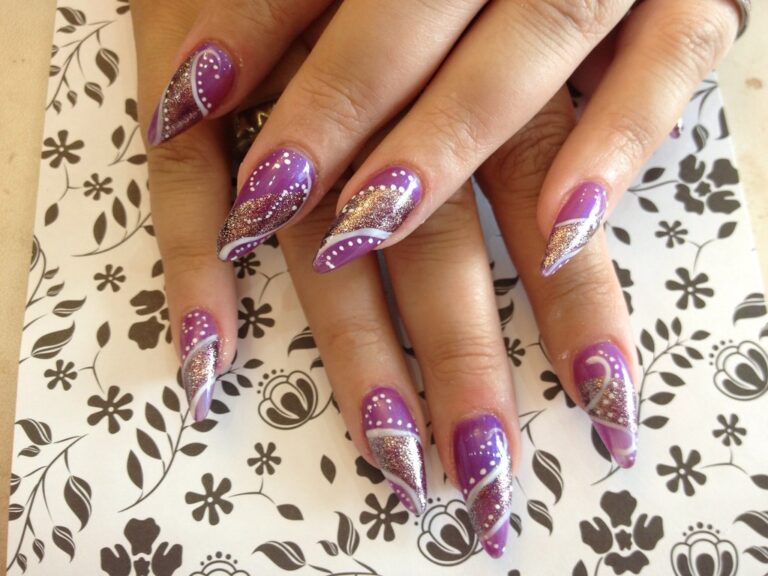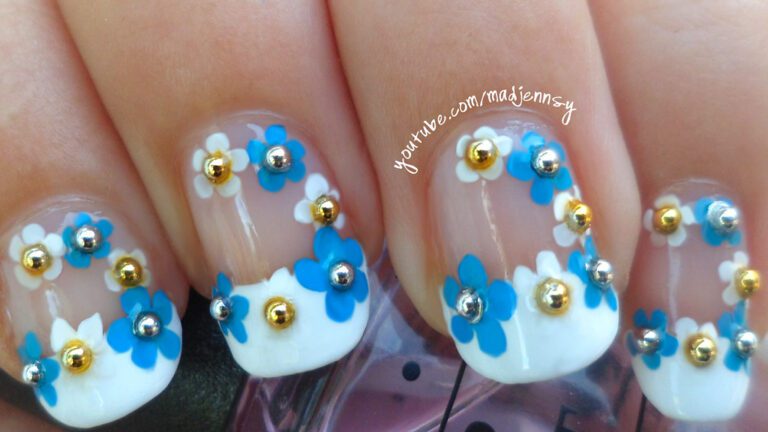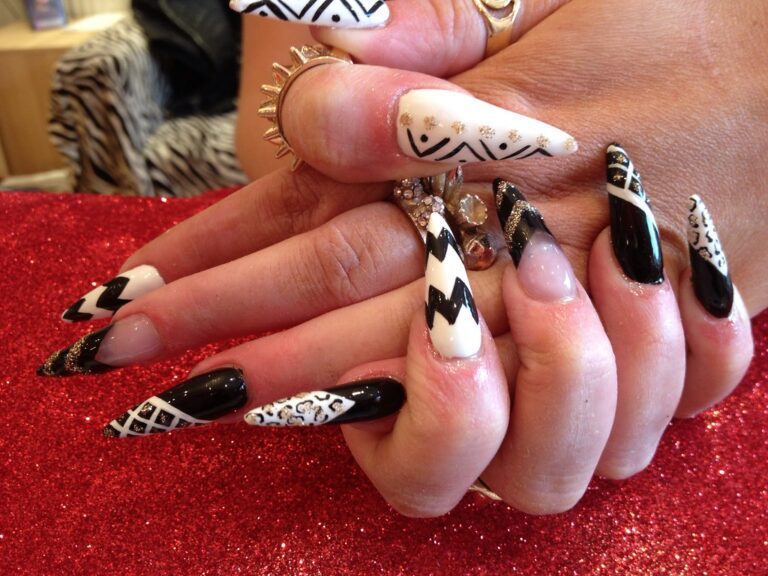“The Anatomy of Nails: How Are They Formed?”
Nails are an intriguing part of the human body, with a complex structure and growth cycle. Understanding the formation of nails provides valuable insight into their health and maintenance. In this article, we will delve into the anatomy of nails, exploring their structure, growth cycle, biological foundations, common disorders, and the impact of lifestyle choices.
Key Takeaways
- The structure of nails is composed of various components, each with its own unique function.
- The growth cycle of nails consists of distinct phases, influenced by factors such as age, health, and environment.
- Keratin plays a crucial role in maintaining the strength and health of nails.
- The nail matrix, located at the base of the nail, is responsible for initiating nail growth.
- Nail disorders and deformities can provide valuable insights into an individual’s nutritional and overall health.
Understanding Nail Structure

The Basic Components of a Nail
Nails are complex structures that serve both functional and aesthetic purposes. At the core of a nail’s anatomy is keratin, a type of protein that is also found in hair and skin. This protein is responsible for the strength and resilience of the nail. Nails are composed of several key components:
- Nail plate: The hard, translucent part of the nail that is visible to the eye.
- Cuticle: The layer of skin at the base of the nail that protects new nail growth.
- Nail bed: The skin beneath the nail plate that supplies nutrients to the nail.
- Lunula: The crescent-shaped whitish area at the base of the nail, which is part of the nail matrix.
- Nail matrix: The tissue under the nail that produces cells that become the nail plate.
Each of these components plays a crucial role in the formation and health of the nail. For instance, the nail matrix is where the nail begins its growth; any damage to this area can affect the nail’s appearance and strength.
Differences Between Fingernails and Toenails
While both fingernails and toenails serve the primary function of protecting the sensitive tips of our fingers and toes, there are distinct differences in their growth, structure, and care requirements. Fingernails grow faster than toenails, a phenomenon often attributed to the more frequent use and consequent trauma to the fingers, which stimulates blood flow and, in turn, nail growth.
- Fingernails are more exposed and generally endure more wear and tear, influencing their growth and shape.
- Toenails are thicker and grow more slowly, possibly due to less exposure and trauma compared to fingernails.
- The shape of the nail bed also differs, with toenails having a flatter profile.
Tip: Regular maintenance and understanding the unique needs of your fingernails and toenails can prevent many common nail problems.
The rate of growth and the resilience of nails are also impacted by factors such as age, diet, and health. It’s essential to recognize these differences to tailor your nail care routine effectively, ensuring both your fingernails and toenails remain healthy and strong.
The Growth Cycle of Nails

Phases of Nail Development
The growth of nails is a continuous process that can be divided into three primary phases: the anagen, catagen, and telogen phases. During the anagen phase, the cells in the root of the nail are dividing rapidly, contributing to the nail’s length. This phase can last several years for fingernails and even longer for toenails.
In the transitional catagen phase, the growth slows down and the nail begins to detach from its blood supply. This phase is relatively short.
Finally, the telogen phase is a resting period where the old nail prepares to be replaced by a new one growing beneath it. This phase can last for a few months before the cycle restarts with the anagen phase.
Tip: Consistent care and maintenance can help ensure that nails remain healthy throughout their growth cycle.
Factors Influencing Nail Growth
Factors that influence nail growth are diverse and can vary from person to person. Poor circulation, ill health, and poor diet are some of the common factors that can negatively impact nail growth. Additionally, age, hormonal changes, and weather conditions play a significant role in determining the rate of nail growth. Trauma to the nail bed can also hinder the growth process. Understanding these factors can help in addressing nail growth concerns effectively.
- Poor circulation
- Ill health
- Poor diet
- Age
- Hormonal changes
- Weather conditions
- Trauma
It’s essential to pay attention to these factors and take necessary steps to maintain optimal nail health.
Biological Foundations of Nail Formation

The Role of Keratin in Nail Health
Keratin is the cornerstone of nail health, serving as the primary structural protein that gives nails their strength and resilience. This fibrous protein not only forms the bulk of the nail but also protects the nail beds from damage and infection.
- Proper keratin levels are essential for maintaining the integrity of the nail structure.* When keratin production is disrupted, it can lead to brittle, weak nails that are prone to splitting and breaking. Conversely, optimal keratin levels contribute to strong, healthy nails that can withstand daily wear and tear.
To promote keratin production, ensure a diet rich in protein and consider supplements if necessary. Regular hydration and moisturization also play a crucial role in supporting nail health.
Factors such as genetics, age, and health conditions can influence the body’s ability to produce keratin. It’s important to be aware of these factors and address any underlying health issues that may be affecting nail health.
Nail Matrix: The Starting Point of Nail Growth
The nail matrix, also known as the matrix unguis, is the area where nail growth originates. It is a crucial part of the nail anatomy as it lies below the skin and is responsible for producing the cells that form the nail plate. The matrix is rich in blood vessels and nerves, making it a highly sensitive and vital component of nail formation. The growth and health of nails are directly influenced by the activity and condition of the nail matrix. Understanding the role of the matrix in nail growth is essential for maintaining healthy nails and addressing common nail disorders and deformities.
Common Nail Disorders and Deformities

Identifying Nutritional Deficiencies Through Nails
Nails can serve as a mirror to our overall health, and specific changes in their appearance may indicate nutritional deficiencies. For instance, spoon-shaped nails, known as koilonychia, often suggest iron deficiency anemia. Similarly, a lack of zinc can lead to white spots on the nails.
Certain nutrients are vital for maintaining nail strength and integrity. Below is a list of nutrients and their associated nail symptoms when deficient:
- Iron: Spoon-shaped nails, pale nail beds
- Zinc: White spots, slow nail growth
- Calcium: Brittle nails, easy breakage
- Vitamin A: Dryness, lack of luster
- Vitamin C: Hangnails, bleeding cuticles
- B Vitamins: Ridges, splitting
Tip: Consistent observation of your nails can provide early clues to nutritional deficits. If you notice any unusual changes, it’s advisable to consult a healthcare professional for a thorough evaluation.
Impact of Diseases on Nail Formation
Diseases can have a profound impact on the formation and health of nails. Systemic conditions, such as psoriasis or eczema, can lead to nail abnormalities like pitting or separation from the nail bed. Infections, particularly fungal, are notorious for causing discoloration, thickening, and even nail loss.
Certain infections can lead to nail inflammation and subsequent deformities. For example, paronychia is an infection of the nail fold that can be caused by bacteria or fungi, often following a manicure. It’s crucial to maintain nail hygiene to prevent such complications.
Tip: Regularly inspect your nails for any changes in color, texture, or shape, as these can be early indicators of underlying health issues.
Systemic diseases like diabetes and peripheral vascular disease can also affect nail growth due to poor circulation. ‘COVID nails‘ is a term that has emerged to describe the ridges and lines that may appear post-infection, indicating a temporary disruption in nail formation.
The Impact of Lifestyle on Nail Formation
How Diet and Hydration Affect Nails
The health of our nails is significantly influenced by our dietary choices and hydration levels. A balanced diet rich in vitamins, minerals, and other nutrients is essential for maintaining strong and healthy nails. For instance, biotin, a B-vitamin found in foods like eggs, almonds, and whole grains, is known for its role in nail strength and growth.
Proper hydration is equally crucial for nail health. Water helps in maintaining the nail’s moisture balance, preventing brittleness and breakage. It’s important to drink plenty of fluids throughout the day to support overall health, including that of your nails.
Key Nutrients for Nail Health:
- Protein: Provides the building blocks for keratin production.
- Iron: Prevents brittle nails and supports growth.
- Zinc: Aids in nail tissue repair and growth.
- Omega-3 Fatty Acids: Promote shiny, hydrated nails.
Tip: Consistently incorporating these nutrients into your diet can improve your nail health over time. Remember, occasional indulgence in nutrient-rich foods is not enough; consistency is key.
The Consequences of Poor Nail Care
Neglecting proper nail care can lead to a variety of issues that not only affect the appearance of nails but also their health. Poor nail care routines, such as infrequent trimming, lack of moisturizing, and ignoring the cuticles, can result in brittle, weak nails that are prone to splitting and breaking. Moreover, the use of harsh chemicals without protection can strip nails of their natural oils, leading to dryness and discoloration.
Habitual neglect or improper nail care techniques can also increase the risk of fungal and bacterial infections. These infections can cause nails to become thickened, discolored, and sometimes painful. It’s important to recognize that nails are not merely an aesthetic feature; they serve as a protective barrier and can reflect overall health.
Tip: Regularly moisturizing the nails and cuticles and avoiding harsh chemicals can significantly improve nail strength and health.
To maintain healthy nails, it’s essential to adopt a comprehensive nail care routine that includes proper cleaning, trimming, and protection. A balanced diet rich in vitamins and minerals is also crucial for supporting nail growth and resilience. Here are some key practices to consider:
- Keep nails clean and dry to prevent infections.
- Trim nails regularly to avoid snags and tears.
- Use gloves when working with detergents or gardening to protect nails from harsh substances.
- Apply a moisturizer to nails and cuticles to maintain hydration.
- Avoid biting or picking at nails, as this can introduce bacteria and lead to infections.
The impact of lifestyle on nail formation is a fascinating topic that has intrigued many. Our nails can reveal a lot about our overall health and well-being. At NAILinspire.com, we are dedicated to providing the ultimate online nail art design library, where you can explore a wide range of nail art ideas, techniques, and inspiration. Whether you’re a nail art enthusiast or someone looking to enhance your nail care routine, NAILinspire.com has something for everyone. Visit our website today to discover the latest trends in nail art and take your nail game to the next level!
Frequently Asked Questions
How do nails grow?
Nails grow from the nail matrix, a tissue located at the base of the nail. As new cells grow, older cells are pushed out, forming the visible nail.
What causes white spots on nails?
White spots on nails can be caused by minor injuries, fungal infections, or nutritional deficiencies such as zinc or calcium deficiency.
Can nail biting affect nail growth?
Yes, nail biting can damage the nail bed and lead to irregular nail growth. It can also increase the risk of infections and affect the overall health of the nails.
How can I strengthen my nails?
Maintaining a balanced diet rich in vitamins and minerals, using nail strengtheners, and keeping nails hydrated can help strengthen nails.
Do nails reveal signs of underlying health conditions?
Yes, changes in nail color, texture, or shape can indicate underlying health issues such as anemia, thyroid problems, or liver disease.
What is the best way to care for cuticles?
Gently pushing back cuticles and keeping them moisturized can help maintain healthy cuticles and prevent infection.

